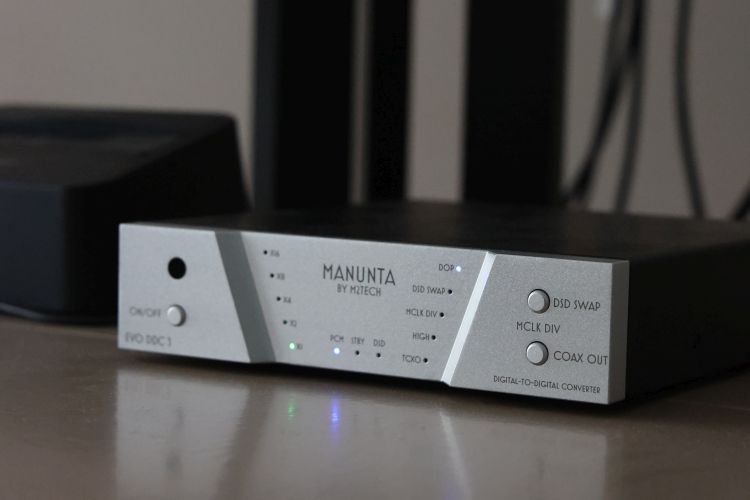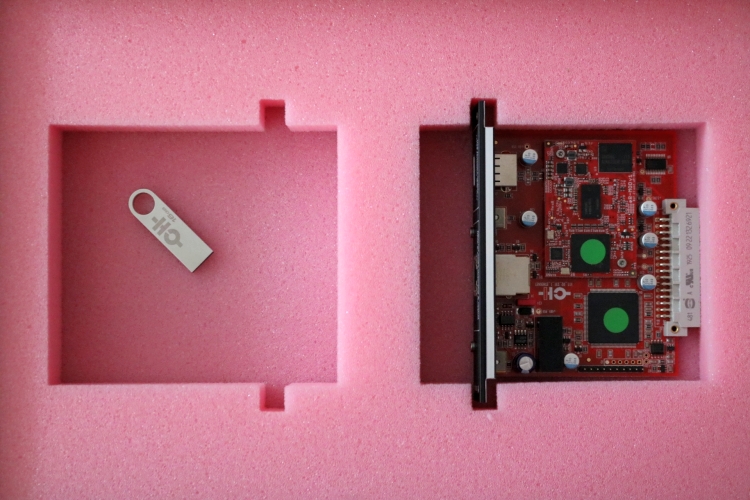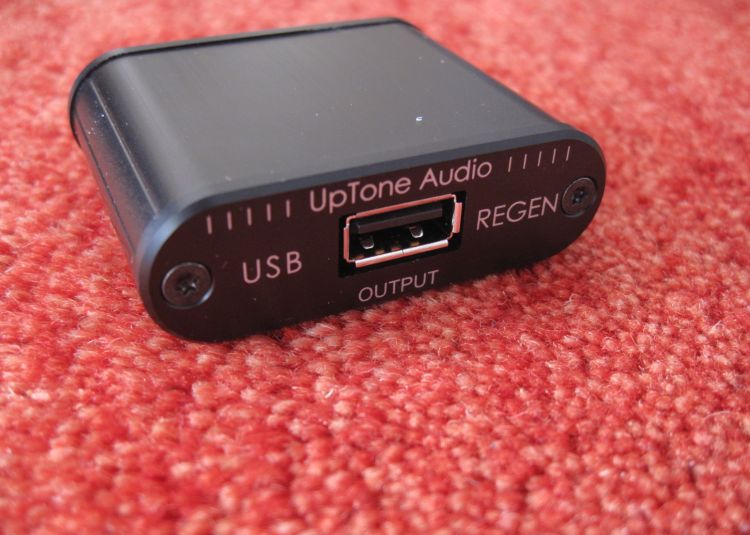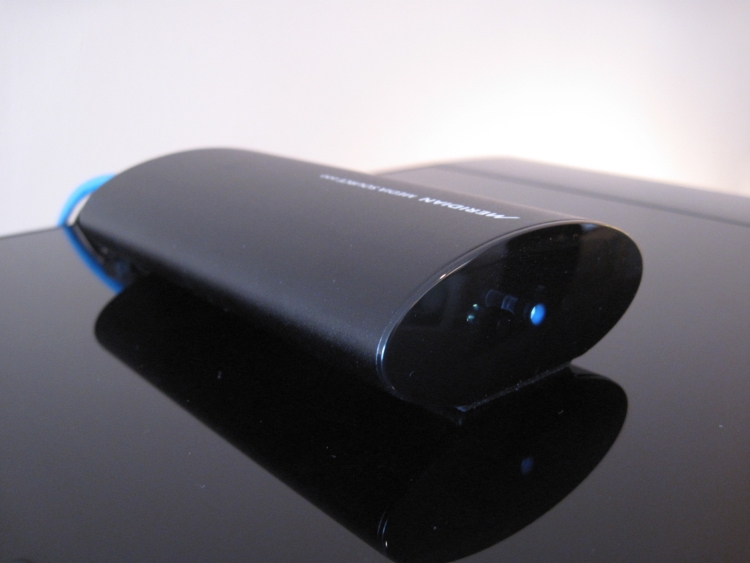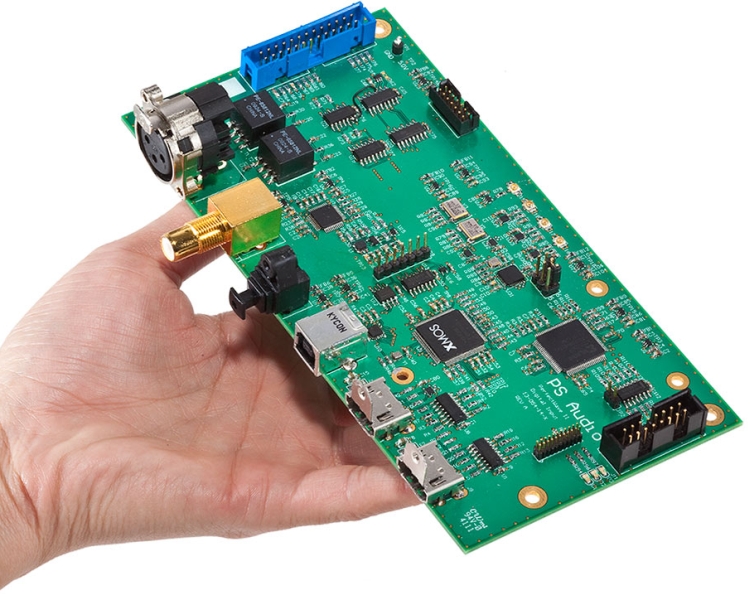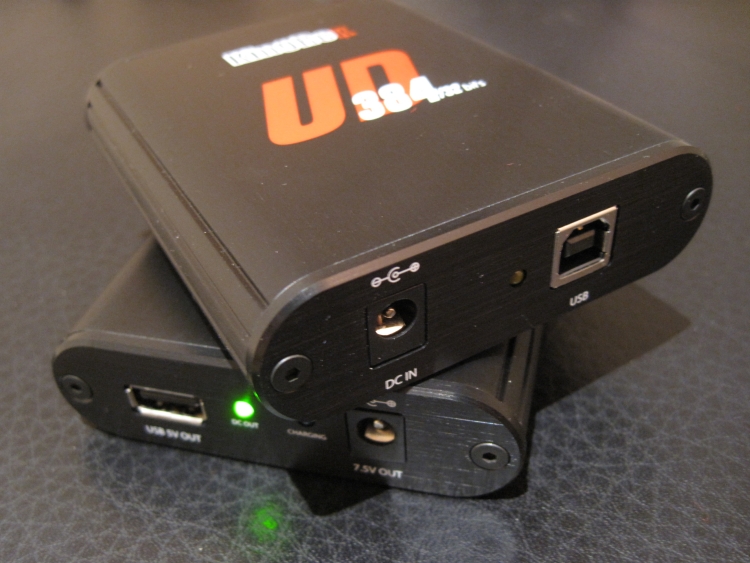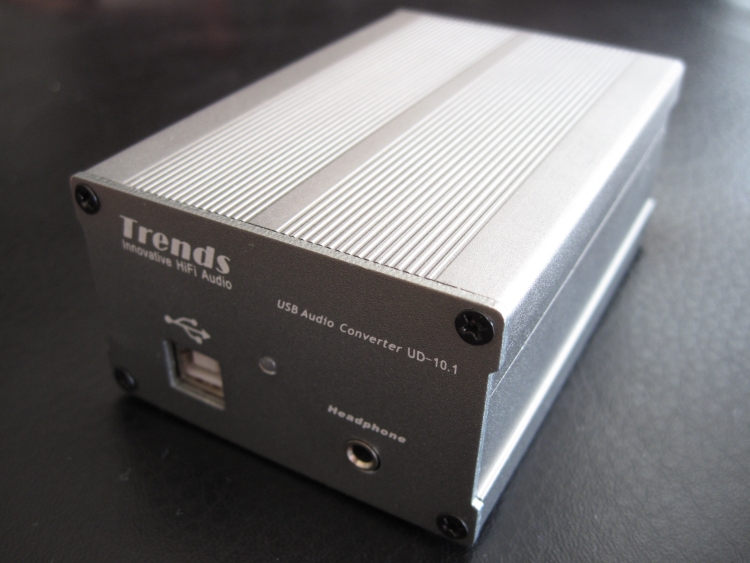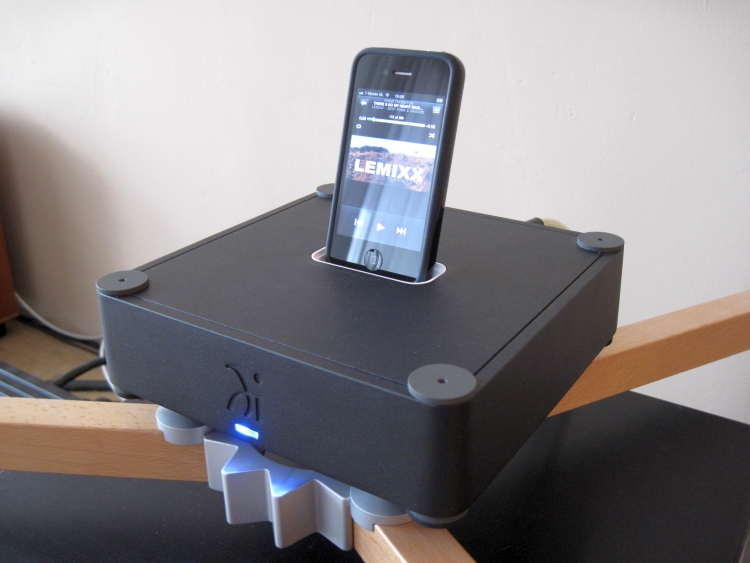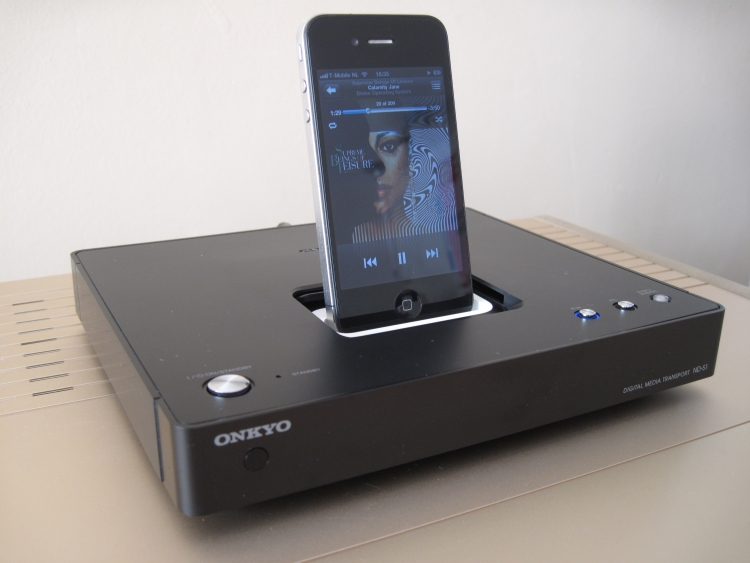
This transport has been on the market since 2009 but I never knew of its existence until after a reader of this site offered to send it to me for a comparison. Naturally I could’t resist
Review sample kindly supplied by a reader of this site
Retail price approximately 150 euro
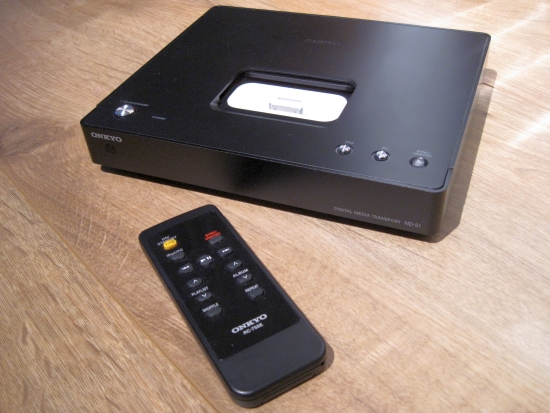
Introduction
The Onkyo ND-S1 is essentially an ipod/iphone dock: it charges ayour iphone/ipod, but it does more: you can also sync the iphone/ipod to your computer when connected via a USB cable. The Onkyo’s USB input also accepts incoming music feeds and thus functions as a USB-spdif interface for when your DAC has no such connection. Onkyo actually don’t call it a dock but a transport, because it pulls the neat trick of extracting the audio data digitally, unlike most other docks that simply take the analog output from the iphone/ipod and convert it inside. In fact, the Onkyo apparently does what the Wadia 171i does but at a much lower price. Regular readers know that I was surprised by the very good quality of the Wadia. The question now begs: is the Onkyo just as good?
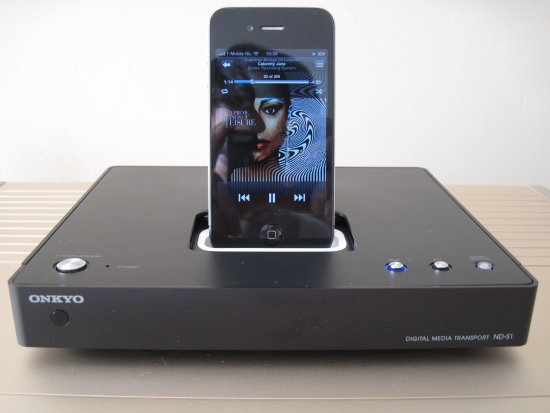
Even though I didn’t have the Wadia 171i around for a direct comparison anymore, it was easy to tell the difference and sadly I have to report that the Onkyo is not as good as the Wadia. I had really hoped that it would be, but apparently there is more to extracting digital audio from an ipod/iphone than you’d think. Connected to my Levinson 360S DAC via a Wireworld Gold Starlight III digital coaxial cable the sound was smooth and friendly. It reminds me a lot of how the Squeezebox had sounded via the same DAC: nothing obviously wrong with the sound, but there was always a distinct synthetic signature to everything you play. A plasticky quality that is hard to describe but boils down to a lack of drive, colour, fullness and live-ness. By that last word I mean that all performances sound very contained and compressed, the opposite of a live performance. I felt that the Levinson DAC now sounded like a 200 euro cd player. Switching the ND-S1 over to the PS Audio PWD dac made for a little improvement in the area of bass pressure and midband openness but it wasn’t enough. Still the sound lacked projection, drive and dynamics. The synthetic quality had diminished but still I had the feeling of listening to an entry level cd player.
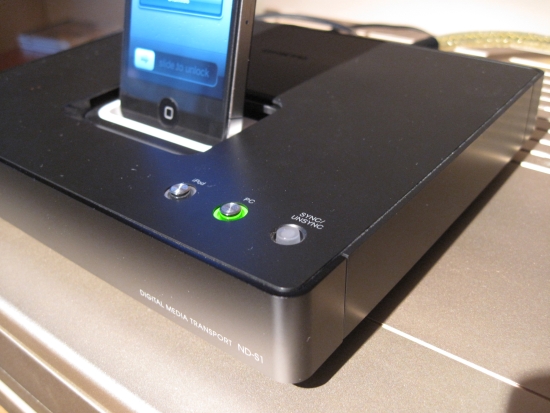
USB input
Out of curiosity I also connected my Macbook pro to the Onkyo’s USB input. While doing that, the iphone can just stay put an can even keep playing until you switch the input. The Onkyo dock is quickly recognised by the Mac’s operating system as a USB DAC and after pressing the nicely lit PC-input button on the Onkyo there’s music from the Macbook. Not too surprisingly, the sound is recognisable and sounds a lot like how the Onkyo sounded when being feb by the iphone. Again the sound is smooth and fluid but just a bit too friendly, too innocent, and again it lacks authenticity.
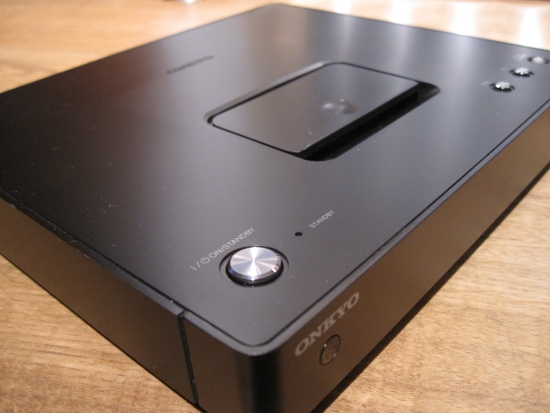
Above: There’s a neat anti-dust flap that slides inward and the buttons look classy. The rear offers plenty connectivity: USB, composite video out, digital coaxial and optical audio out, and a remote extender jack. The power supply is a regular external “wall wart” power adapter.
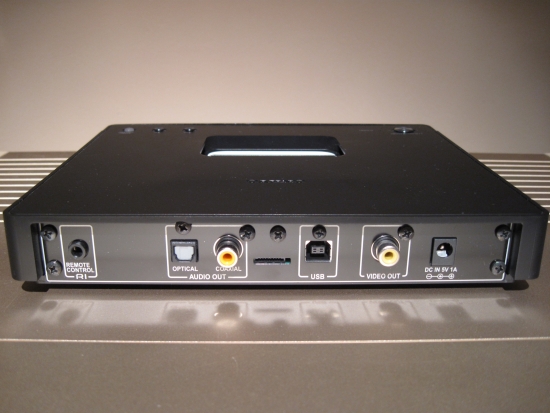
Conclusion
The little Onkyo costs so very little that it is not reasonable to expect the best sound possible. It actually does its job very nicely and works very well: the supplied IR remote works splendidly – better than the Wadia’s: it offers a nice extra in the shape of a USB input and it is cosmetically pleasing. The dock even has a dustcap that you can slide open when ready to insert an iphone/ipod. It just doesn’t sound as spectacularly good as the Wadia 171i, but this only goes to show why the latter costs almost 4 times the Onkyo’s price.
